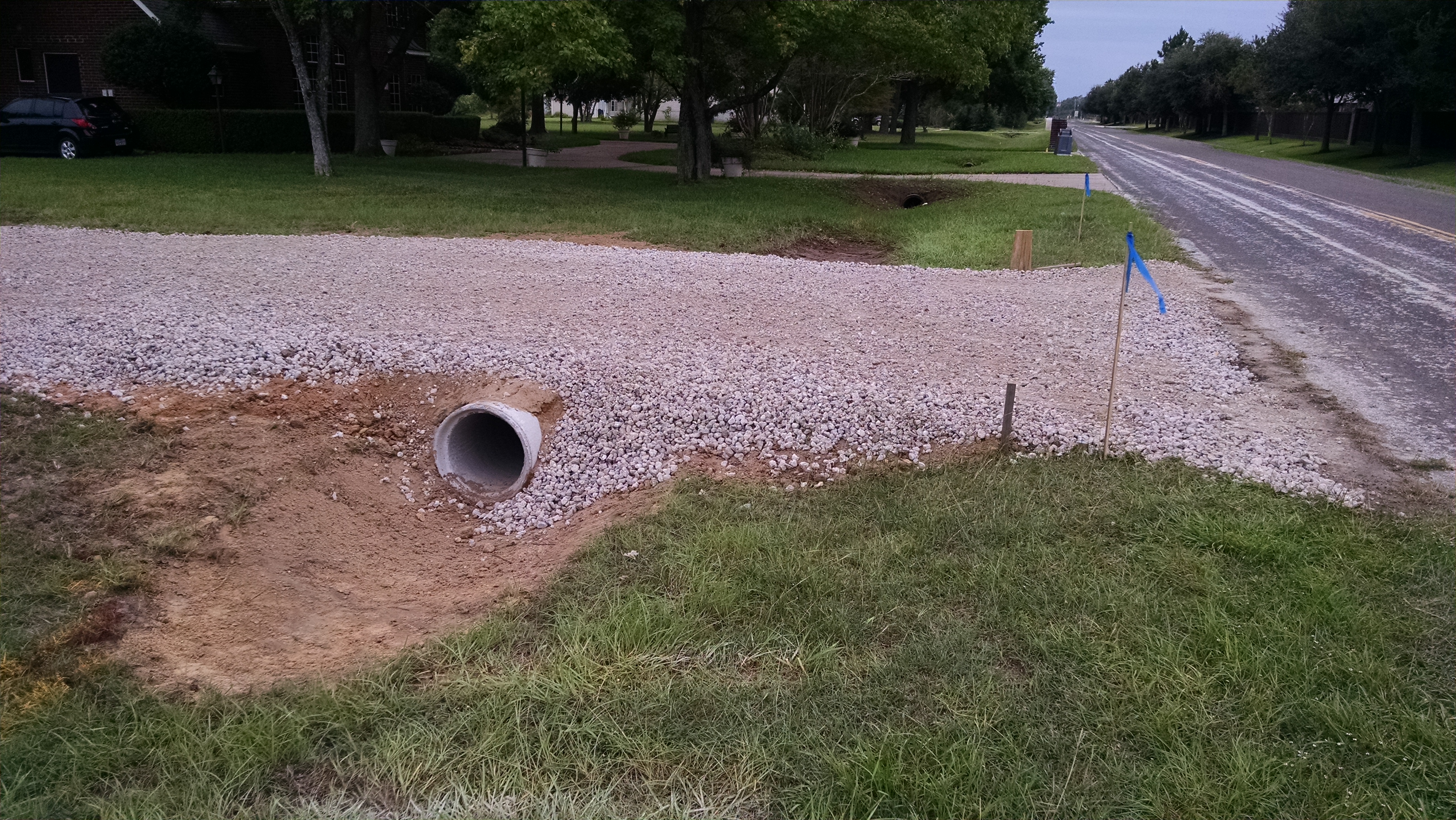Knowledgeable Tree Removal for Property Security
Knowledgeable Tree Removal for Property Security
Blog Article
Culvert Setup Facilitated: Step-by-Step Guide for Success
From choosing the proper culvert size to incorporating correct drainage procedures, each action in the installation process plays an important role in the performance and durability of the culvert system. Remain tuned to reveal the crucial steps and considerations that can make culvert installment a smooth and successful venture.
Choosing the Right Culvert Dimension
Choosing the ideal culvert dimension is essential for ensuring reliable water flow and architectural integrity in culvert installment jobs - Pad Construction. The dimension of the culvert straight affects the circulation capacity of water through the framework. A culvert that is also little can lead to flooding and overflow, while one that is as well big may result in reduced water velocity, possibly creating sediment buildup and obstructions
To figure out the ideal culvert dimension, variables such as the watershed location, height flow prices, and hydraulic efficiency requirement to be meticulously considered. Calculations based on these parameters aid in selecting a dimension that can sufficiently take care of the expected water quantity while decreasing the risk of clogs and structural failure.
It is vital to get in touch with design guidelines and standards to ensure that the picked culvert size satisfies the job needs and local policies (Pad Construction). By selecting the right culvert size, project managers can optimize water circulation, protect against possible issues, and enhance the total efficiency and durability of the culvert installment
Preparing the Installation Site
Reliable culvert setup necessitates thorough preparation of the installation website to make certain ideal architectural support and functionality. Before starting the installment procedure, it is crucial to get rid of the website of any kind of particles, vegetation, or blockages that can hamper the culvert's positioning.
Additionally, it is very important to take into consideration variables such as soil make-up, groundwater levels, and environmental impacts when preparing the setup site. Carrying out a thorough site assessment can help recognize any type of possible difficulties or risks that might impact the culvert's efficiency. By taking the time to prepare the setup website correctly, you can help guarantee an effective culvert setup that fulfills architectural needs and guarantees long-term capability.
Placing the Culvert Appropriately

The quality at which the culvert is put is vital for preserving an appropriate incline for water flow. A steady incline aids protect against merging and advertises reliable drain. Additionally, the culvert ought to be oriented appropriately to make sure that the inlet and outlet are in the proper areas. This positioning is important for the culvert to operate successfully in handling water flow.
Backfilling and Compacting the Soil
Appropriate backfilling and compaction of the dirt around the culvert is essential to guarantee stability and protect against prospective issues in the future. Once the culvert is correctly placed, the next essential action is to backfill the location around it with ideal material.
After placing the backfill material, it is vital to portable it in layers of uniform density. Making use of a compactor or a mechanical tamper, portable the soil gently to stay clear of damaging the culvert. Compaction helps in decreasing the opportunities of negotiation and guarantees consistent assistance around the culvert. It is essential to portable the dirt evenly on all sides of the culvert to maintain its architectural stability.
Correct backfilling and compaction not only provide stability to the culvert but additionally aid in stopping soil disintegration and keeping the long life of the culvert system.
Guaranteeing Appropriate Water Drainage Assimilation
Integrating reliable drain remedies plays a critical function in the overall performance and longevity of culvert installations. Appropriate drainage combination is vital for managing water circulation, protecting against disintegration, and guaranteeing the architectural stability of the culvert system. To accomplish this, it is essential to design an extensive drain strategy that considers variables such as the volume of water expected, the topography of the area, and the kind of dirt existing.

In addition, including attributes like erosion control measures, such as riprap or vegetation, can better improve the performance of the drain system. By thoroughly preparing and implementing these drain solutions, culvert installations can work efficiently and withstand the examination of time.
Final Thought
In verdict, proper culvert installment is vital for keeping efficient drainage systems. By selecting the ideal culvert dimension, preparing the installment site, placing the culvert properly, backfilling and condensing the dirt, and ensuring proper water drainage combination, success can be achieved. Complying with these steps will aid make sure the durability and performance of the culvert, ultimately contributing to the general success of the drainage system.
Report this page